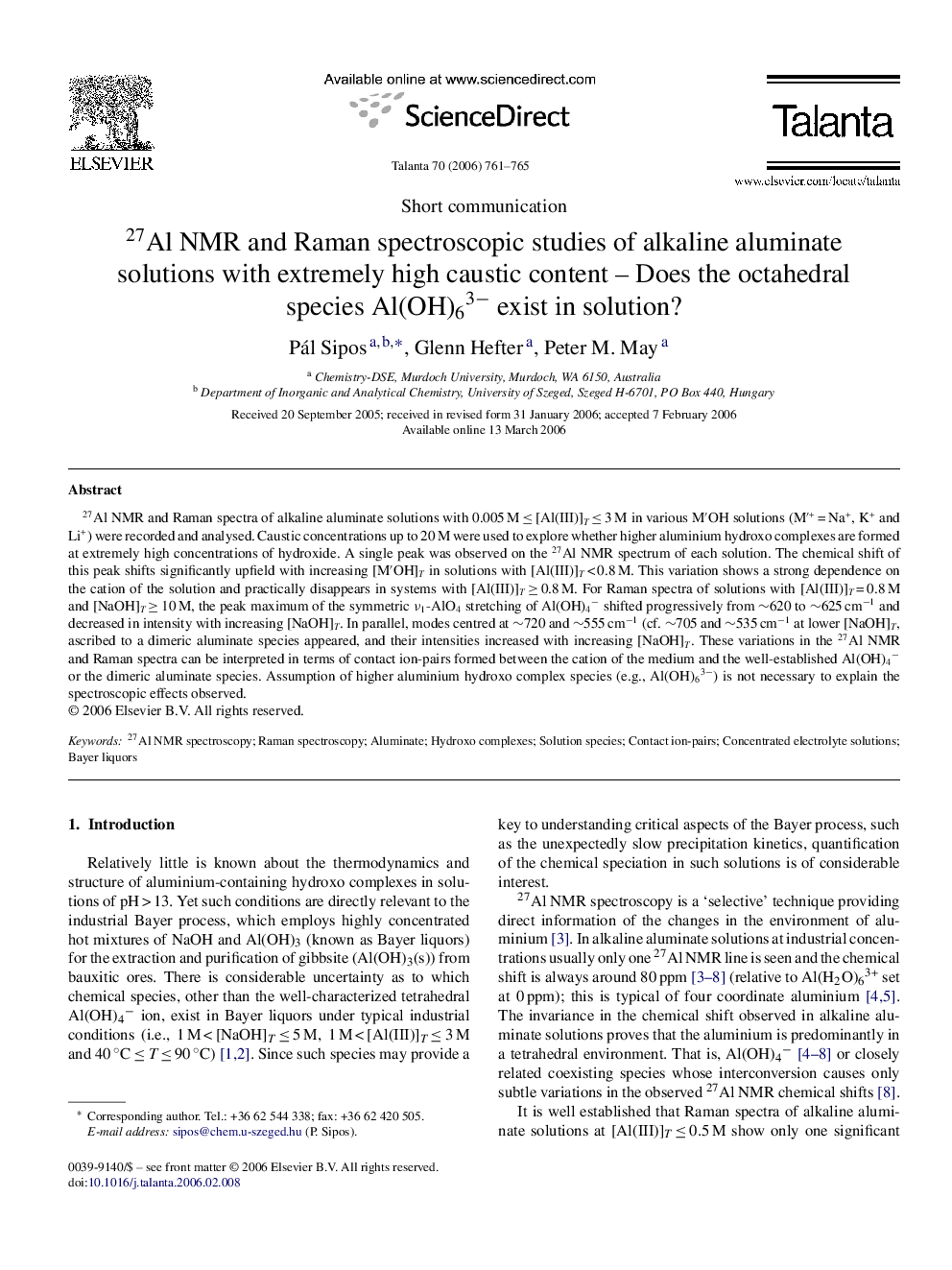| Article ID | Journal | Published Year | Pages | File Type |
|---|---|---|---|---|
| 1246295 | Talanta | 2006 | 5 Pages |
27Al NMR and Raman spectra of alkaline aluminate solutions with 0.005 M ≤ [Al(III)]T ≤ 3 M in various M′OH solutions (M′+ = Na+, K+ and Li+) were recorded and analysed. Caustic concentrations up to 20 M were used to explore whether higher aluminium hydroxo complexes are formed at extremely high concentrations of hydroxide. A single peak was observed on the 27Al NMR spectrum of each solution. The chemical shift of this peak shifts significantly upfield with increasing [M′OH]T in solutions with [Al(III)]T < 0.8 M. This variation shows a strong dependence on the cation of the solution and practically disappears in systems with [Al(III)]T ≥ 0.8 M. For Raman spectra of solutions with [Al(III)]T = 0.8 M and [NaOH]T ≥ 10 M, the peak maximum of the symmetric ν1-AlO4 stretching of Al(OH)4− shifted progressively from ∼620 to ∼625 cm−1 and decreased in intensity with increasing [NaOH]T. In parallel, modes centred at ∼720 and ∼555 cm−1 (cf. ∼705 and ∼535 cm−1 at lower [NaOH]T, ascribed to a dimeric aluminate species appeared, and their intensities increased with increasing [NaOH]T. These variations in the 27Al NMR and Raman spectra can be interpreted in terms of contact ion-pairs formed between the cation of the medium and the well-established Al(OH)4− or the dimeric aluminate species. Assumption of higher aluminium hydroxo complex species (e.g., Al(OH)63−) is not necessary to explain the spectroscopic effects observed.
